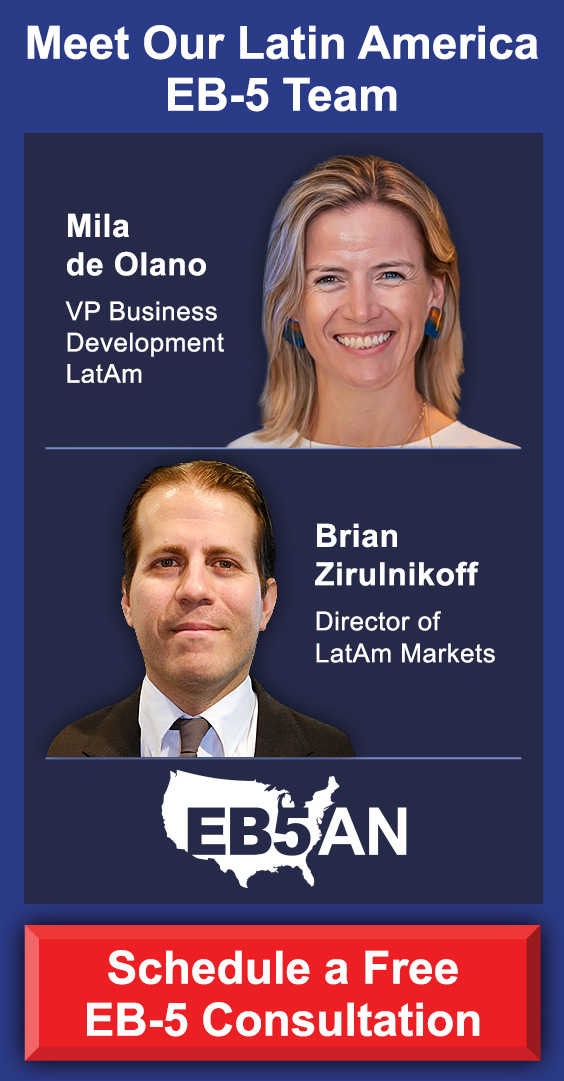As the U.S. EB-5 Immigrant Investor Program continues to evolve under the regulatory framework introduced by the EB-5 Reform and Integrity Act of 2022 (RIA), investor behavior is also shifting. A growing number of Chinese and Indian EB-5 investors are now turning their focus to rural projects.
This move is not driven by speculation but rather by concrete data and systemic advantages unique to rural investments, advantages that are becoming increasingly critical as urban EB-5 projects face extensive backlogs.
Meanwhile, recent adjudication data confirms that as of June 2025, rural I-526E petitions are being approved at far higher rates and much faster speeds than urban petitions, which remain largely pending. In this article, we will detail the reasons behind this shift.
Warning Signs for TEA Backlogs: What Investors Need to Know
The Backlog Crisis in Urban EB-5 Projects
Strategic Decision-Making by Indian and Chinese Investors
Increased Confidence in Rural EB-5 Offerings
What to Consider When Choosing a Rural Project
The Road Ahead
Warning Signs for TEA Backlogs: What Investors Need to Know
While rural EB-5 projects remain the most favorable option in 2025, recent developments suggest that other targeted employment area (TEA) categories, especially high-unemployment TEAs, may soon experience visa backlogs. The January 2025 Visa Bulletin hinted at this possibility, indicating that the high-unemployment TEA category may no longer remain “current” in the near future.
When this change is officially reflected in a future visa bulletin, the implications will be substantial, particularly for Chinese and Indian investors.
As of June 2025, the rural visa category remains current and continues to benefit from both reserved visa availability and priority processing. In contrast, the high-unemployment TEA category—while also reserved—does not enjoy priority processing and could soon face retrogression if demand continues to rise.
Most notably, new applicants filing after the cutoff date would no longer be eligible for concurrent filing of Form I-526E and Form I-485 (adjustment of status). Concurrent filing has been a major advantage for EB-5 investors already in the U.S., allowing them to live and work legally while their petition is pending. Losing this option would mean additional delays, uncertainty, and potentially having to leave the U.S. while waiting for visa availability.
For investors from high-demand countries, timing is now more crucial than ever. Those seeking to benefit from concurrent filing and a smoother immigration process should consider filing under the rural TEA category, which continues to remain current and offers reserved visa protection, before the high-unemployment TEA backlog becomes official.
The Backlog Crisis in Urban EB-5 Projects
According to USCIS adjudication data released in June 2025, only 1.5% of urban I-526E petitions filed under the RIA have been adjudicated since February 2023, while approximately 24% of rural I-526E filings have already been processed.
Urban adjudications have slowed to a near halt unless pursued through litigation, leaving most standard EB-5 investors—particularly those from oversubscribed countries—stuck in a growing queue with no clear timeline for movement.
For these investors, long waits are more than just an inconvenience. They can lead to real-life complications: children who age out of eligibility, prolonged separation from family, and increased uncertainty regarding immigration outcomes. These risks have made investors far more strategic and discerning about the types of EB-5 projects they pursue.
Strategic Decision-Making by Indian and Chinese Investors
The filing data through January 2025 confirms that Indian and Chinese investors are adapting their strategies. Where urban projects once dominated the EB-5 landscape due to their visibility and perceived safety, investors are now taking a closer look at the underlying visa dynamics.
Rural projects, which may have once been overlooked, now offer the most predictable and efficient path to a Green Card. This shift underscores a growing maturity in the EB-5 investor base. Investors are no longer making decisions based solely on project location or amenities, they’re factoring in immigration risk, processing times, and long-term family considerations.
The advantages of rural projects are especially appealing to families with dependent children. Since a child must be under 21 at the time of I-526E filing to qualify as a dependent, a delay of several years can mean aging out of eligibility. Rural project investors are more likely to avoid this painful scenario due to shorter processing timelines and reserved visa availability.
Increased Confidence in Rural EB-5 Offerings
Another factor contributing to the shift is the increased professionalism and compliance within rural EB-5 offerings. With the implementation of the Reform and Integrity Act of 2022 (RIA), rural projects now operate under stricter transparency and oversight rules. This has made them more attractive to foreign investors who may have previously worried about project viability and immigration success rates.
Many rural projects are sponsored by experienced regional centers that are well-versed in the new compliance requirements. Investors are also more aware of due diligence processes and have access to better tools to assess risk, further bolstering confidence in rural options.
USCIS data also shows that rural filings are not only being processed more quickly—they’re also being approved at record-high rates. As of mid-2025, I-526E petitions have reached a historic 97% approval rate, offering investors added peace of mind when selecting carefully vetted rural projects.
What to Consider When Choosing a Rural Project
While rural projects offer compelling advantages, investors must still exercise caution and perform thorough due diligence. Key considerations include:
Regional Center Track Record
Work with established, RIA-compliant regional centers with a history of successful EB-5 approvals.
Project Viability
Ensure the project has a sound business plan, realistic job creation forecasts, and proper use of EB-5 capital.
Exit Strategy
Understand how and when the invested capital will be returned, and whether the repayment plan aligns with your goals.
Indian and Chinese investors, in particular, should work with qualified industry professionals who understand the nuances of both immigration law and EB-5 finance structures.
The Road Ahead
As EB-5 adjudications continue under the RIA framework, rural projects stand out as the most strategic option for investors from high-demand countries. With faster processing, reserved visas, and the ability to preserve concurrent filing benefits, rural investments now offer the clearest and most efficient route to a U.S. Green Card.
This is more than a temporary workaround for delays—it’s a deliberate shift grounded in the latest data. USCIS has prioritized rural filings, and EB5AN’s rural projects alone accounted for 20% of all rural I-526E approvals in 2023 and 2024. For Indian, Chinese, and other backlogged investors, the rural category presents an opportunity to reduce risk and move forward with greater confidence.
At EB5AN, we prioritize transparency and investor success. Our team has helped more than 2,700 families from over 70 countries become permanent residents through low-risk, USCIS-approved EB-5 projects.
If you would like to know more about your EB-5 investment options, book a free call with our expert team today.










